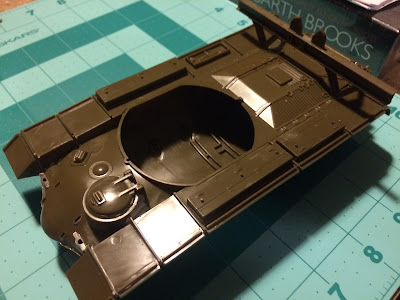The next four steps (6 - 9) all have to do with the assembly of the hydraulic pistons to deploy and recover the scissor bridge. They are all pretty quick so I'm going to put them all in one post.
See the completed bridge piston below:
Step 7, the center launcher cylinder, gave me no issues. The same painting will be done here as on the bridge piston: base color and either silver or chrome for the ram.
Step 8, the front launcher cylinder, didn't have any problems either aside from a little flash. Again, the same painting techniques will be followed.
Only one last step, #9 the main launcher cylinder.
The only thing different on this one was the addition of the main hydraulic tank (#63). It's keyed to only fit one way.
That concludes the assembly of the hydraulic cylinders and pistons that are used to deploy the scissor bridge. Next I'll start working on the bridge launcher assembly itself.
Stay tuned...

















